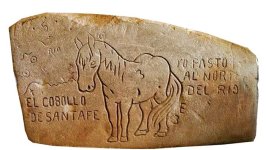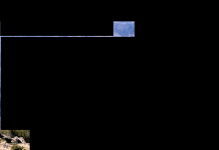somehiker
Silver Member
- May 1, 2007
- 4,365
- 6,426
- Primary Interest:
- All Treasure Hunting
I would not put much stock in that stone. I believe it's the one Wayne found. The truth behind the stones came out later. I did find a piece of ore at that spot. Looked like someone busted it open after transporting it there.
Hi Frank
I would think many prospectors rode and walked across that area, between their mines and Florence, for example.
Maybe even Waltz, when he stayed in Florence, or went for supplies. Coulda dropped some right there.




